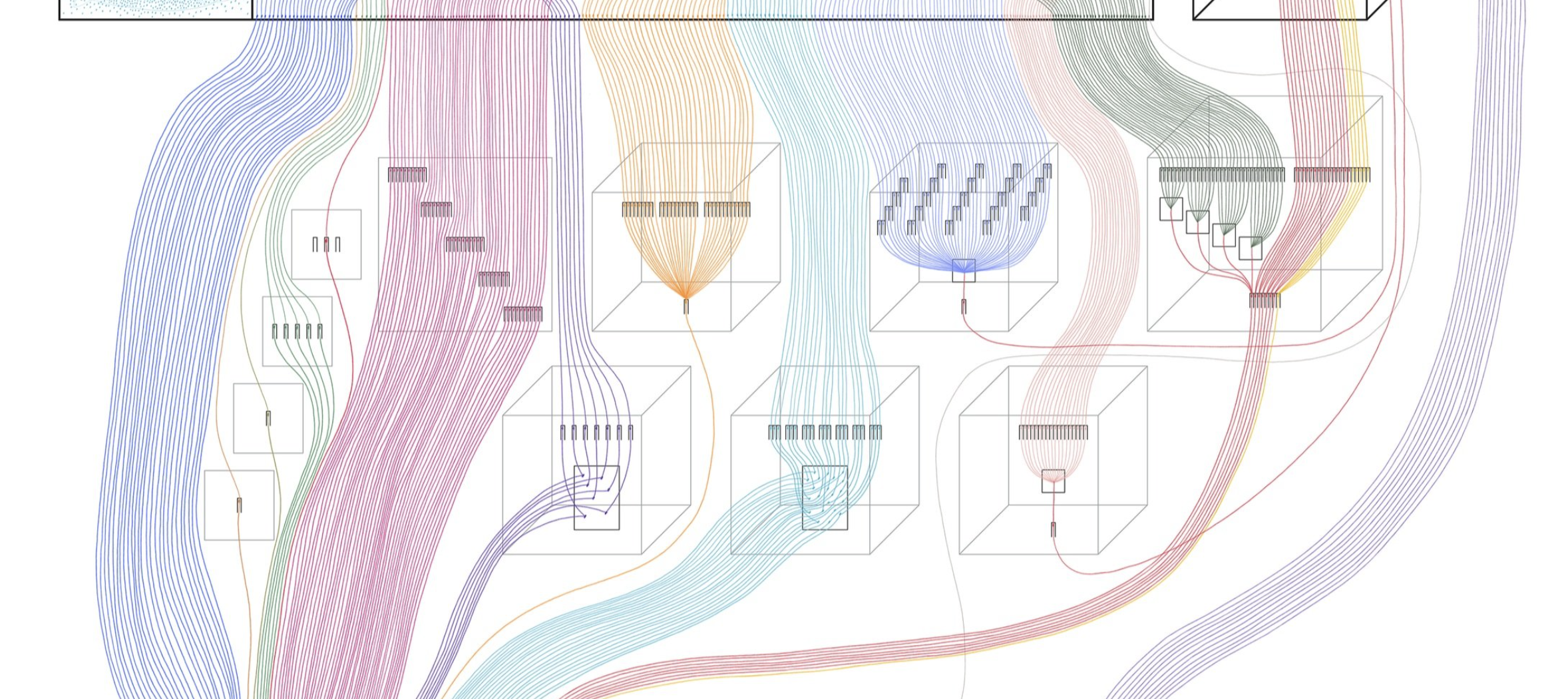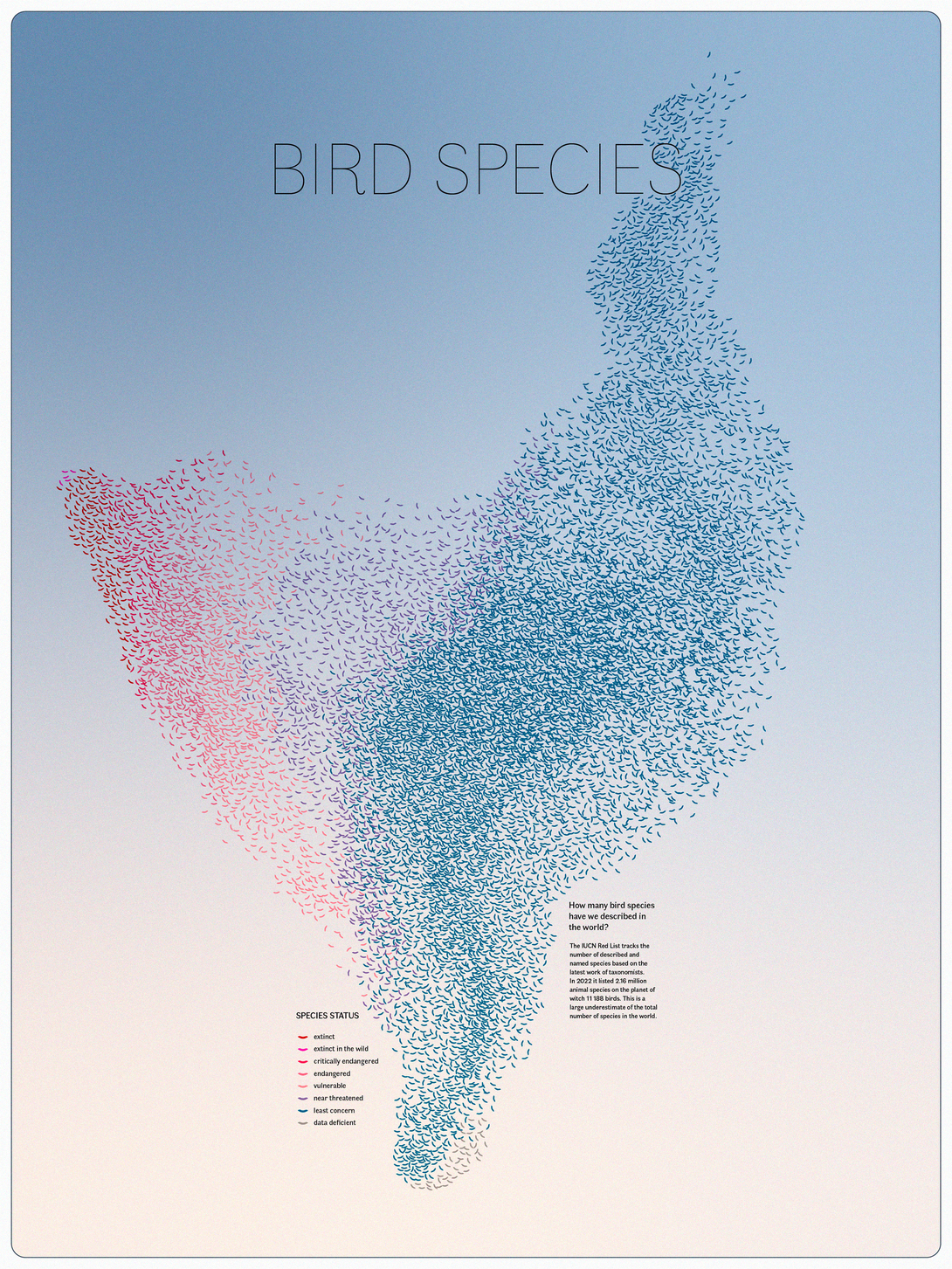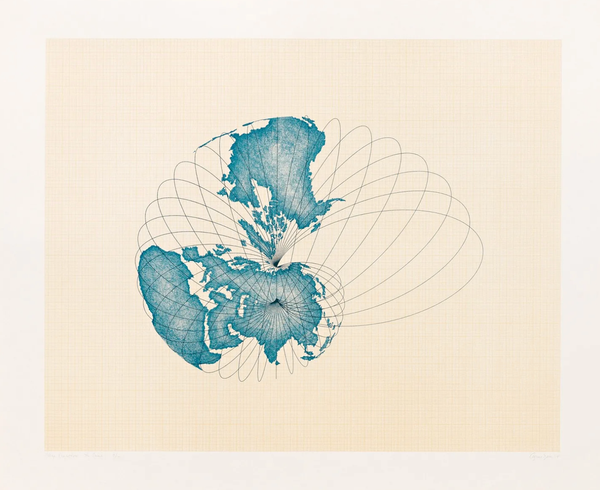A tipping point
Customizing sonifications, data murmurations, fast WebGPU plots
Hello,
Before getting to some links, a few announcements:
- my data sonification “The Carrington Event” won a Data Sonification Award. Honored to be included alongside many other great sonifications for the inaugural year of this award. Explore them all here.
- if your work has been affected by the administration’s cuts to science and research, add them to The Impact Map, a new grassroots tool to show “the local impact of federal workforce, funding, and policy decisions”.
- I’m moving this newsletter from Substack to Ghost (more on that below!). You don’t need to do anything—all existing subscribers will transfer next week. I will send one final Substack next week as a reminder to lookout for the new Ghost domain, but that’s it.
If you don’t care about my reasons for migrating, feel free to skip to the links below!
The Tipping Point
A few weeks back I read an insightful article on the ownership method of Substack and it’s inevitable pitfalls. It got me thinking about the long term of this publication.
I have never loved Substack specifically, and mainly switched over here out of convenience. I certainly did not love it’s response to platforming Nazi content in 2023 (Mike Masnick put it best in his take: “Your reputation as a private site is what you allow”. Full article here).
But onto the ownership model. I’ve been alive long enough to live through the rise and fall of Facebook, Twitter, Youtube, Instagram, etc. And I don’t mean “fall” in terms of power, as these companies are more powerful than ever before. I mean the fall of quality, of decency, of privacy. I’m talking about enshittification.
“Here is how platforms die: First, they are good to their users; then they abuse their users to make things better for their business customers; finally, they abuse those business customers to claw back all the value for themselves. Then, they die.” - Cory Doctorow in The Enshittification of Tiktok
When a startup, particularly a tech startup, depends solely on venture capital investors in a loose regulatory environment, enshittification happens. Everyone feels it. Online spaces have become more hostile, more addictive, more AI-slop-ridden, and more flooded with ads.
The Tipping Point: Growth at All Costs - The moment a social media platform reaches mainstream adoption, the stakes shift. No longer just a cool tool for early adopters, the platform has become a full-fledged business. Investors start demanding returns. Advertisers see a goldmine of attention. And the pressure builds—not just to grow, but to dominate. - Who owns Substack?
(I’d really recommend reading the entire post of the above quote, which contextualizes the rise of Substack alongside other social media companies.)
My feeling is that Substack is on the same trajectory, and I’d rather get out before it gets worse. I may get fewer subscribers from the “recommended” Substack algorithm. That’s fine. I don’t depend on this publication. I don’t even charge. I would rather take this publication somewhere that aligns with my values, and have full control over where and how these words get out into the world.
Ghost does just that: “open source, independent, and funded 100% by its users. No investors. No bullshit.”
Again, you don’t need to change anything. You’ll get one reminder email before the switch, and then it’s back to the usual irregular postings from me. If you found me here on Substack, thanks for joining. I hope you’ll continue to find something interesting in these posts as I continue to share.
Peace,
Ben
Read

Customization is key to a compelling sonification
Aura Walmer, friend of Decibels and creator of the Data Sonification Toolkit, recently published a wonderful on how to customize your sonification for better storytelling. This is a different approach to the kind of sonification work you hear in “The Carrington Event”, which doesn’t prime the listener with information beforehand and exists mostly as an artistic artifact. For journalists however, explaining what the “data” is behind a sonification from inside the sonification is a crucial step. Aura does a great job illustrating the process here with insightful examples.
Explore

Data Murmurations: Points in flight (People Like You)
I love this project by data artist Stefanie Posavec on visualizing complex health studies. In her blog post, Stefanie writes about the process of 'art as inquiry', acting as a 'cartographer of the unkown'. Sometimes when faced with complex or messy data, taking clean traditional visualization approach no longer makes sense. Read more of Stefanie's thoughts after the project on LinkedIn.
As luck would have it, last week I also saved a project in a similar vein as inspiration after browsing the information is beautiful awards site. Each mark represents “all the described species of birds in the world (11,188 species, based on 2022 data)”, shaded by their status on the IUCN Red List.

It reminded me of Jer Thorps “Every Bird” series, which I have featured on a previous edition of the newsletter. Both use a similar technique that I quite like: instead of aggregating the data into a single mark (line, bar, circle, etc) show every data point individually.
Learn

fastplotlib
fastplotlib is a new Python visualization library for high-performance, interactive scientific visualization. It uses a GPU to render visualizations, making it great for very large or high-dimensional datasets. The code snippets look very readable and promising. Read more about it in the introduction blog and see the Github repo here.





